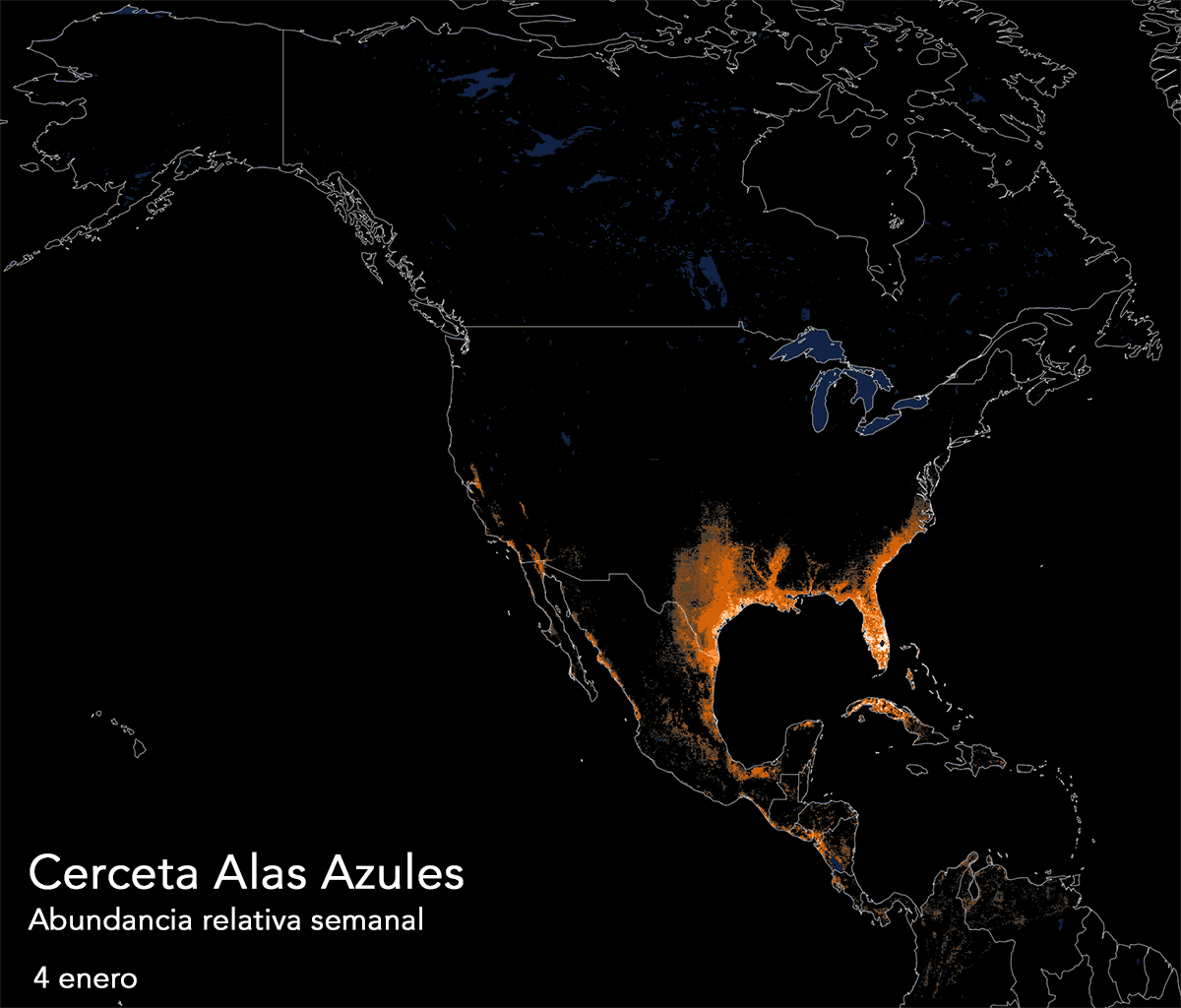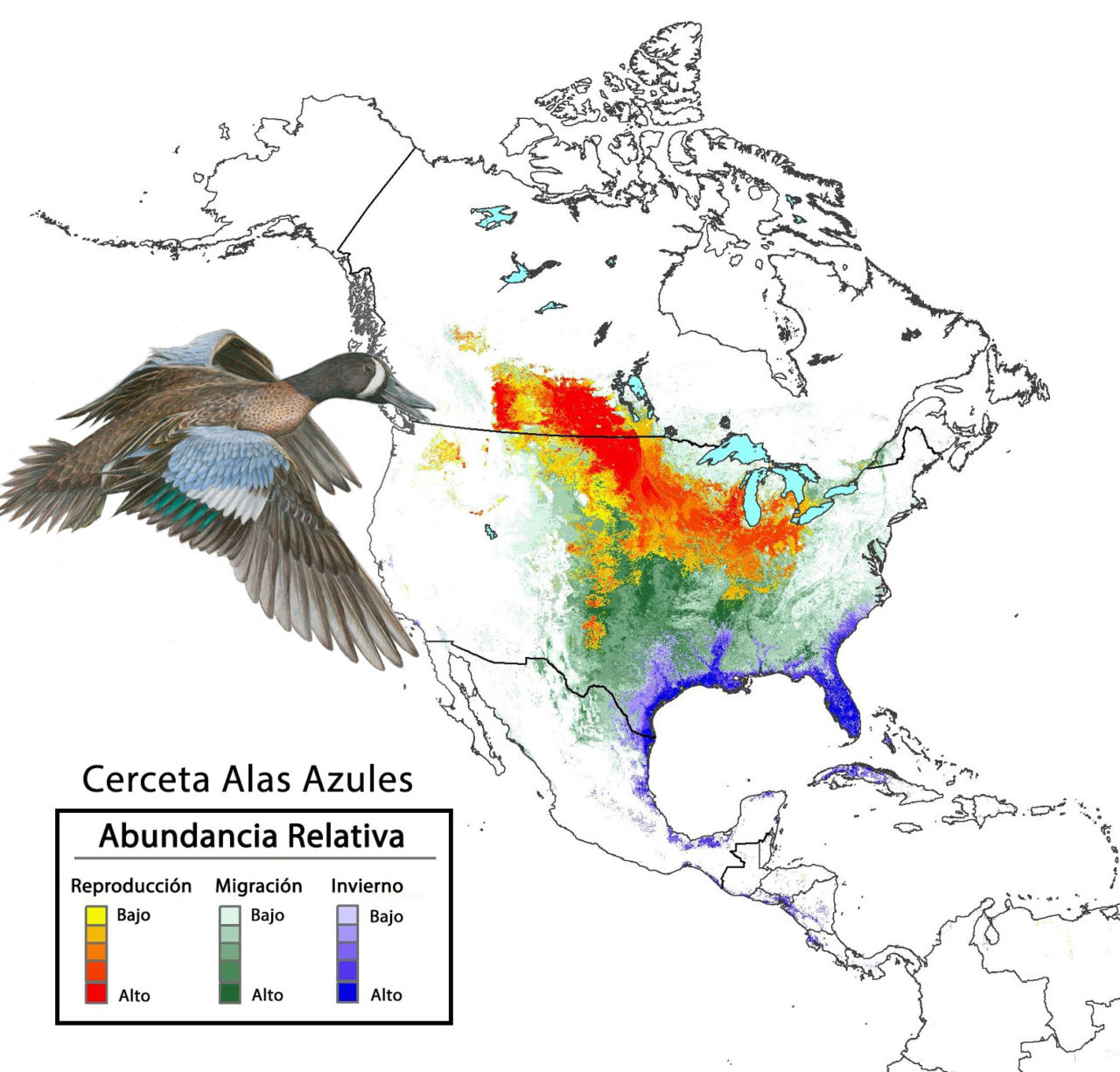Cerceta Alas Azules
La traducción en Español pronto estará disponible.


About the Maps
The animated map shows the Blue-winged Teal’s predicted distribution and relative abundance across all 52 weeks of the year. The animation illustrates the migratory movements of each species as its populations travel across North America. The brighter the color, the higher the expected count of the species on a standardized eBird count.
The data used to generate this animation were produced using a statistical model to predict the relative abundance of the population at specific times and locations by relating observations of birds from eBird to local environmental features derived from NASA remote sensing data. Please note that because these maps represent models of predicted abundance, they are intended to illustrate broad patterns of connectivity across regions and are not intended to accurately depict local distributions in any given week. As more and more eBird data become available, the accuracy of these predictive models will improve.
The lower map represents the average predicted relative abundance within the breeding season (red scale), in winter (blue scale), and during fall and spring migration (combined: green scale). These maps are the best representation we have of the total year-round distribution and abundance for migratory species, illustrating connections between regions and major habitats.
About Blue-winged Teal Abundance and Distribution
The Blue-winged Teal is a bird of freshwater marshes and grassy wetlands. The center of its breeding abundance is in the Prairie Pothole region of south-central Canada and north-central U.S. In winter they concentrate in Florida, along the Gulf Coast of the U.S. and Mexico, and in smaller numbers in the Caribbean and south through Central America to Colombia. The largest numbers migrate through the Mississippi and Central flyways, but some can be seen anywhere in the eastern U.S., and locally in the West. Blue-winged Teal are popular among hunters in the southern U.S. and Mexico. Their populations have been stable overall.
More about Blue-winged Teal at All About Birds.
